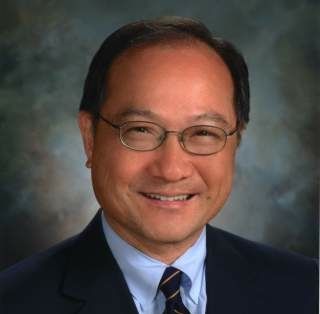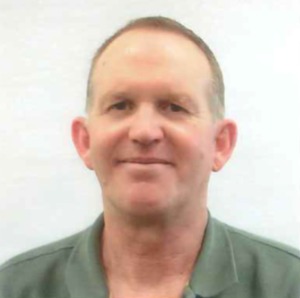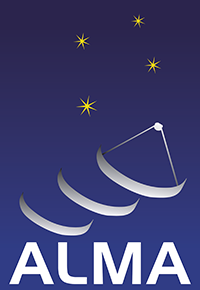NRAO eNews
Volume 10, Issue 1
25 January 2017
NRAO eNews
Volume 10, Issue 1 • 25 January 2017

Upcoming Events

American Astronomical Society Meeting
Jun 4 - 8, 2017 | Austin, Texas

2017 Astrobiology Graduate Conference
Jun 5 - 9, 2017 | Charlottesville, VA

Women in Astronomy IV: The Many Faces of Women Astronomers
Jun 9 - 11, 2017 | Austin, TX

Developing the ngVLA Science Program Workshop
Jun 26 - 29, 2017 | Socorro, NM
Kwok-Yung (Fred) Lo: 1947-2016

[click to enlarge]
It is with great regret that I report the death of our friend and colleague, Kwok-Yung (Fred) Lo on Friday, 16 December 2016, from complications associated with cancer. Fred was an eminent scientist who led the NRAO as its Director and Distinguished Astronomer from September 2002 – May 2012, an important decade during which the NRAO and its international partners realized the construction and initiation of science operations with the Atacama Large Millimeter/submillimeter Array (ALMA). Fred also led the NRAO while the Expanded Very Large Array (EVLA) project was built and completed – on time, to specification and under budget – enabling the rebirth of the 1970s-era VLA as the much more capable Karl G. Jansky Very Large Array. During his tenure as Director, the Green Bank Telescope and the Very Long Baseline Array also made extraordinary progress in their scientific capabilities and productivity. Fred’s vision and leadership were vital to each of these major NRAO technical and scientific successes.
Born in 1947 in Nanjing, Fred arrived in the United States in 1965 to attend the Massachusetts Institute of Technology, from which he obtained a B.S. and a Ph.D. in Physics in 1969 and 1974, respectively. He joined the California Institute of Technology in 1974 as a Research Fellow in Radio Astronomy, and in 1976, took up a position at the University of California, Berkeley as a Miller Fellow. Two years later, Fred returned to Caltech where he held research and teaching positions until, in 1986, he became a Professor of Astronomy at the University of Illinois at Urbana-Champaign and served as Astronomy Department Chair from 1995 – 1997. Immediately prior to coming to the NRAO, Fred joined the Academia Sinica in Taipei, Taiwan in 1997 as Director of its newly-formed Institute of Astronomy and Astrophysics, and was appointed Professor of Physics at the National Taiwan University in 1998.
Fred was an accomplished radio astronomer and physicist whose research impacted international scientific progress across multiple fields. His interests ranged from mega-masers to star formation, starbursts, the Galactic Center, and cosmology. Fred made the first millimeter-wave interferometric map of carbon dioxide emission from an external galaxy and in 1986, he and Mark Claussen were the first to suggest that luminous water maser emission in external galaxies is circumnuclear, affiliated with active galactic nuclei, and could serve as very high resolution probes of the centers of galaxies. These keen insights led eventually to the Megamaser Cosmology Project that is now accurately measuring the expansion rate of the Universe and that will yield a direct test of the standard cosmological model and meaningfully constrain the nature of dark energy; Fred was one of the driving intellects in the project.
Fred’s vision for radio astronomy and NRAO lie at the center of our plans for the future, and we will greatly miss his guidance and focus on all aspects of astronomy. His force of character and remarkable intellect made him a notable leader in our profession, across many arenas and decades. Many people have commented that like it or not, you knew where you stood with Fred, and you knew what he thought, and why – that was the thoughtful, kind individual I knew for more than 20 years.
NRAO will proudly honor Fred’s contributions to astronomy at an event that will be held later in 2017. Throughout his long life and career Fred touched many lives, and we will miss him.
NRAO Call for Proposals: Semester 2017B

As announced earlier, the National Radio Astronomy Observatory (NRAO) invites scientists to participate in the Semester 2017B Call for Proposals for the Karl G. Jansky Very Large Array (VLA).
The submission deadline for Semester 2017B proposals is Wednesday, 1 February 2017, at 17:00 EST (22:00 UTC).
The NRAO especially wishes to highlight continuing opportunities for joint observations with the Chandra X-ray Observatory, the Hubble Space Telescope and the Swift Gamma-Ray Burst Mission.
Proposal preparation and submission are via the NRAO Proposal Submission Tool (PST) available at NRAO Interactive Services. Note that PST use requires registration. Proposers who need assistance with proposal preparation or have questions regarding the Call or NRAO telescope capabilities should contact Observatory staff via the NRAO Helpdesk.
New Assistant Director for New Mexico Operations

[click to enlarge]
It gives me great pleasure to announce that Mark McKinnon will become the permanent NRAO Assistant Director for New Mexico Operations, effective immediately.
Mark came to Socorro in the 1980’s to begin his Astronomy Masters and Ph.D. degrees, after an engineering career in the oil industry. He became a Jansky Fellow, and following that moved to Green Bank as an assistant scientist, and eventually Deputy Assistant Director during the Green Bank Telescope construction. In that role, he led the team that conducted the first-light observations with the new telescope.
Back in Socorro, Mark was the New Mexico Deputy Assistant Director and Project Manager for the Expanded Very Large Array Project between 2006-2010, and led that team to create the highly-successful Jansky Very Large Array that we enjoy today. From 2010-2014 he was the North American ALMA Project Manager, and subsequently led the Square Kilometre Array Dish Consortium during a long-term visit to Australia.
It is no understatement to say that Mark has been critically involved at the highest levels of most major NRAO accomplishments over the past two decades. Mark has been the interim Assistant Director for New Mexico Operations for the past year, during which many great science results emerged from the VLA and the Very Long Baseline Array, and he helped oversee the complex transition to create the Long Baseline Observatory.
Fundamentally, Mark gets the job done; I cannot think of anyone I have greater confidence in to manage NRAO’s largest site, and help lead some of NRAO’s key initiatives such as the next generation Very Large Array.
Please join me in congratulating Mark!
ALMA Program News

Cycle 4 Science
Cycle 4 science observing continues, with the array now in its shrinking cycle, transitioning from the current C40-2 configuration – 2.4” beam at 100 GHz, 273m longest baseline – until the austral winter engineering period in February, and in C40-1 configuration – 3.7” beam at 100 GHz; 155m longest baseline – afterward. The array is due to be fully in C40-1 by 10 March 2017.
Data processing and delivery is moving smoothly, continuing use of the Cycle 4 calibration and newly commissioned imaging pipelines. Backlogs from Cycle 3 are shrinking – all North American Cycle 3 A- and B-ranked projects are delivered – and deliveries continue of other Cycle 3 and Cycle 4 data products. The Calibration and Imaging pipelines are working efficiently.
Cycle 5 Call for Proposals
A Call for Proposals with detailed information on Cycle 5 will be issued in March 2017, with a deadline for proposal submission in April 2017. Decisions will be reached soon about the implementation of new capabilities for Cycle 5, and these will be announced at the ALMA Science Portal soon. The capabilities expected include the implementation of ALMA Band 5 (163-211 GHz), for which the scope of science includes the water line at 183 GHz, and highly redshifted [C II]. A meeting titled Getting Ready for ALMA Band 5 will be held at ESO 1-3 February 2017. Commissioning and science verification data for Band 5 are available on the ALMA Science Portal.
New installments of Science Verification data were released on 18 January 2017. This data release contains observations of the Sun obtained during the Solar commissioning campaigns in 2014 and 2015. The release contains mosaics and single pointing observations in Band 3 and Band 6 with the 12m, 7m and total power arrays.
An announcement of 3mm Very Long Baseline Interferometry (VLBI) in Cycle 5 has been posted on the ALMA Science Portal. Proposals for 3mm VLBI must submit a proposal to the Global 3mm VLBI Array (1 February 2017 deadline) and ALMA, except as explained on the Portal. For 1mm proposals, only a proposal to ALMA needs to be submitted. The Joint ALMA Observatory will collect the proposals and send them to NRAO for disposition.
ALMA Science Sustainability
A Call for Proposals for ALMA Development Projects was released 10 October 2016.
A detailed description of the process and requirements can be reviewed on the Call for Proposals for Development Projects website. The deadline for proposals is 30 January 2017. A Coordination Webinar was held 9 November; presentations are linked. A presentation delivered at the January 2017 U.S. National Committee – National Radio Science Meeting is also available.
ALMA Proposal Writing Workshops
In advance of the ALMA Cycle 5 Call for Proposals, we will have a series of ALMA proposal writing workshops at a number of North American institutions at the end of March – beginning of April 2017. The goal of these events is to provide users with the knowledge they need to carry out cutting-edge scientific research using the ALMA facilities. We are particularly interested in reaching new users, so no experience with radio astronomy is required to participate!
These ALMA events are one- to two-day workshops designed in cooperation with host institutions across North America, and hosted by experienced local postdocs as part of the ALMA Ambassadors program. Participation is free. No registration fees will be charged. These events include science talks, an introduction to submillimeter interferometry, and hands-on workshops designed to assist you in proposal preparation, observation planning, and data reduction for ALMA Cycle 5. You will need to bring your laptop to participate in the hands-on sessions, and we will provide access to the free software that you can download, as well as a small dataset to be used in the demonstrations.
If you are interested in attending an ALMA Proposal Workshop, have a look for the one nearest you from the list below. Please visit our website for dates and times - coming soon!
ALMA Cycle 5 Proposal Writing Workshop Locations
|
|
Recent Media Releases
Career Opportunities
ALMA Director: The Joint ALMA Observatory in Santiago, Chile is actively recruiting a Director to provide unified leadership for ALMA operations and development. The ALMA Board, responsible for governance and oversight and consisting of members representing the parties, Executives and astronomy community, invites applications for the position of ALMA Director. The successful applicant will be expected to take up the post on 1 April 2018, when the current ALMA Director completes his term. For consideration please email your curriculum vitae and letter expressing your interest to Dr. David Silva at almasearchcommittee@gmail.com. Please send three letters of recommendation to resumes@nrao.edu .
Director – Central Development Laboratory: The NRAO is actively recruiting a Director for the Central Development Laboratory (CDL). The CDL Director is expected to ensure that the Laboratory will be engaged in R&D essential for the future needs of radio astronomy, working where appropriate in partnership with the astronomy community. The position will be located in Charlottesville, Virginia.
ALMA – Head of Data Management Group: The Joint ALMA Observatory in Santiago, Chile is actively recruiting a Head of Data Management Group with extensive experience for coordinating and organizing data management activities at the ALMA radio observatory in Chile. The Joint ALMA Observatory (JAO) is operated by ESO, Associated Universities Inc./National Radio Astronomy Observatory (AUI/NRAO), and the National Astronomical Observatory of Japan (NAOJ). The Head of the Data Management Group will provide ongoing management leadership for system astronomy and archived content management staff, and continue to lead efforts to maximizing the performance impact of the observatory data delivery through continued improvement, including software testing of the on-line system and coordination and integration of Extension and Optimization of Capabilities activities.
From the Archives
Ellen Bouton

[click to enlarge]
About this month's photo: Following National Science Foundation (NSF) final approval in February 1965, and 2.5 years of construction on Kitt Peak, Arizona, the NRAO 36-foot telescope began formal operation in January 1968. From the start, there were frequent improvements and replacements to the system, initiated by the talented technical staff in Tucson and Charlottesville. In late 1977, Tucson staff installed a new Cassegrain box and new 150 GHz quasi-optics. In this photo from that installation process, the old receiver control rack has been lifted across the dome by Bill Hale (at left, platform) and Don Cardarella (at right, platform), who lower the rack to Bob Freund. Bob will wheel it into the electronics building seen to the right of the dome. Before the electronics building was completed in 1976, staff had to haul delicate electronics down the mountain to Tucson and then back up again, a trip that was both time-consuming and risky for the equipment.
For additional photos from this event, see the photo story in The Observer, v. 19, no. 2, June 1978, pages 27-28. Thanks to Mark Gordon, Bob Freund, and Bill Hale for help with identifying the two shadowed figures on the platform.
From the Archives is an ongoing series illustrating NRAO and U.S. radio astronomy history via images selected from our collections of individuals' and institutional papers. If readers have images they believe would be of interest to the Archives, please contact Ellen Bouton.

